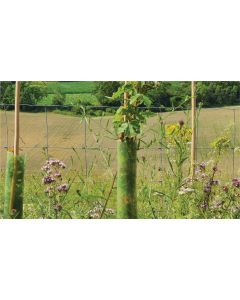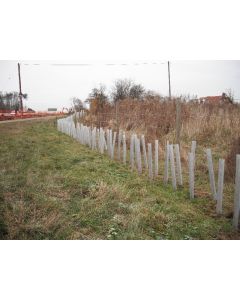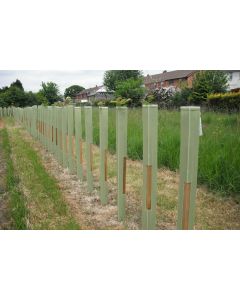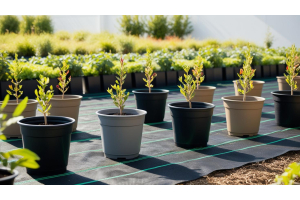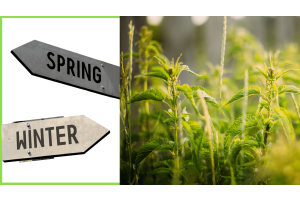Spiral Tree Guards: A Guide to Tree Care
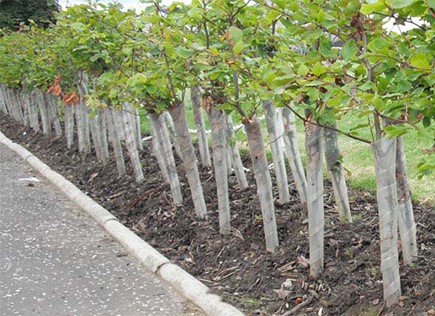
Trees, particularly young ones, need protection from various forms of harm. This article dives into the fundamentals of tree care, focusing on using spiral tree guards for safeguarding young trees and shrubs and enhancing the aesthetics of your landscaping.
The Importance of Tree Care
Tree care is vital for several reasons. Trees play an important role in improving our air quality, reducing noise pollution, offering shade, and enhancing the beauty of a landscape. Regular tree care practices ensure healthy growth and longevity of trees.
Challenges in Tree Care
Young trees and shrubs face several challenges, including attacks from browsing animals such as rabbits, hares, sheep, and deer, exposure to harsh weather conditions, and damage from lawn equipment. They may also be affected by diseases, pests, and harmful chemicals used in gardening.
Spiral Tree Guards: A Solution for Tree Protection
Spiral tree guards are an effective solution for protecting young trees from the above challenges. These guards are designed to wrap around the tree's trunk, offering a protective barrier against physical damage and browsing animals.
What are Spiral Tree Guards?
Spiral tree guards are cylindrical plastic covers that spiral around a tree's trunk, providing a protective shield. They are an economical and efficient method of safeguarding young trees and shrubs against potential threats.
Why Use Spiral Tree Guards?
The use of spiral tree guards offers three primary benefits:
- Cost-effectiveness: Spiral tree guards are more affordable than other protection methods like fencing or wire netting.
- Protection: They offer excellent protection against herbivores and exposure to harmful chemicals.
- No injury to the tree: Unlike plastic ties used in staking, spiral tree guards grow with the tree, eliminating the risk of strangulation.
Installation of Spiral Tree Guards
The correct installation of spiral tree guards is crucial to ensure effective protection. The guards should be installed with the ventilation holes forming an arrow pattern pointing upwards, and the overlaps should also point upwards.
Choosing the Right Spiral Tree Guard
Selecting the appropriate spiral tree guard requires consideration of several factors, including the tree species, the threats it faces, and the longevity of the guard.
Material
The material of the spiral tree guard determines its durability and environmental impact. Petrochemical-based plastic guards, while robust, are not biodegradable and must be recycled after use. These come in clear or brown options, depending on your preferences.
Alternatively, there are Plant-based bio-based guards. These are 100% compostable and function exactly the same as any other tree guard but without harming nature.
Paper or cardboard guards are more environmentally friendly than plastic and non-biodegradable options but may not last as long.
Ventilation
Ventilation holes in spiral tree guards can enhance tree growth by reducing the effects of mildew and leaf burn. However, if the tree is regularly exposed to chemical weed killers, opting for guards without holes is better.
Spiral vs other shapes
Non-spiral options are also available, such as the Tree Defender. The shelter offers faster tree growth, increased survival rates, and reduced planting and maintenance costs.
- The square constriction enables it to be delivered' flat pack' to the point of application, enabling larger quantities to be transported easier at a lower cost than round rigid tree shelters.
- Sold in bundles of 50 pieces and available in a light green colour with an estimated life span of 5-7 years
However, Unlike the spiral guard, this protective shelter will not grow with your trees. So, this is definitely something to consider when choosing your tree protection tools.
Environmental Considerations
While spiral tree guards offer excellent protection, their environmental impact must be considered. Plastic should be minimised and recycled when used.
Reduce
The use of spiral tree guards should be minimised wherever possible. Consider alternatives like fencing or increasing the tree planting density to allow for some losses.
Reuse
Although reusing plastic tree guards is challenging due to their degradation over time, efforts should be made to reuse them wherever possible.
Recycle
Plastic tree guards should be recycled to reduce their environmental impact. After use, they should be collected and sent for recycling.
Decision-making Process for Tree Protection
When deciding on the protection measures for trees, several questions need to be considered:
- Is protection necessary for successful tree establishment?
- What threats does the tree face?
- Can fencing provide adequate protection?
- Is further protection from voles required?
- Does the tree species benefit from a tree guard?
- Does the woodland creation plan address the use of plastics?
The answers to these questions would guide the decision on the protection method.
Protecting Broadleaf Trees
Broadleaf trees often require protection from browsing animals. Spiral tree guards can be beneficial here. However, the decision to use them should be based on several considerations, including the presence of mammals, the purpose of the tree (timber or not), the size of the area, and the benefits of the tree species from a tree shelter.
Spiral tree guards offer an effective and economical solution for protecting young trees and shrubs. While they have benefits, their use should be carefully considered, keeping environmental impacts in mind. By making informed decisions on tree protection methods, we can ensure trees' successful establishment and growth, enhancing the beauty and value of our landscapes.



